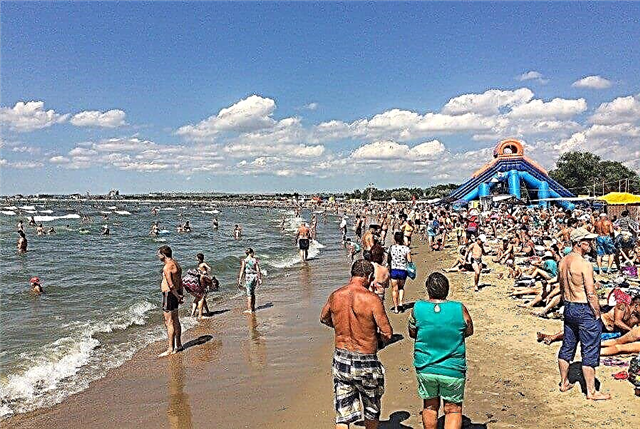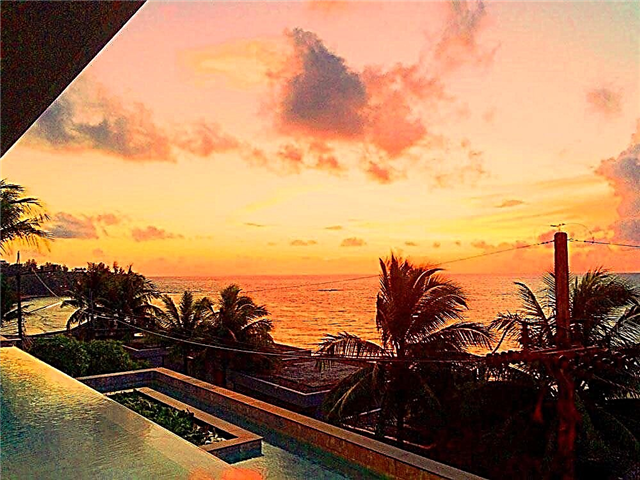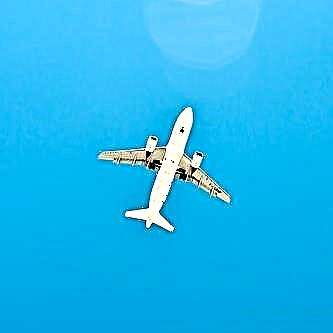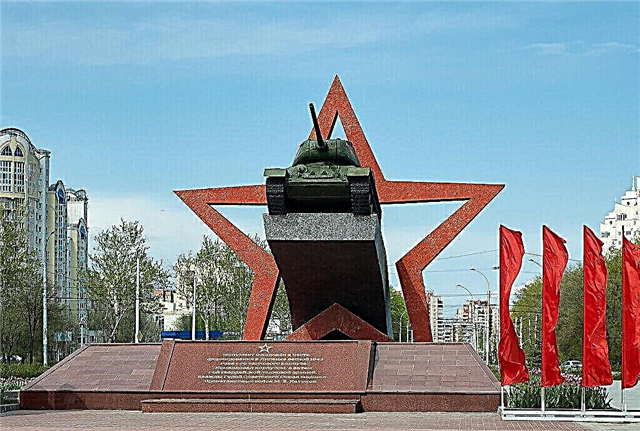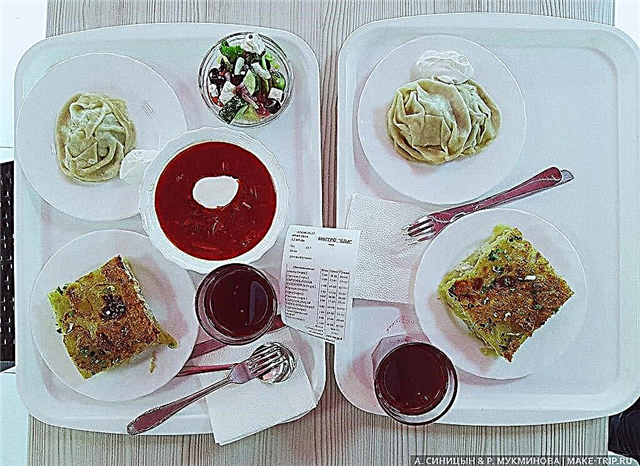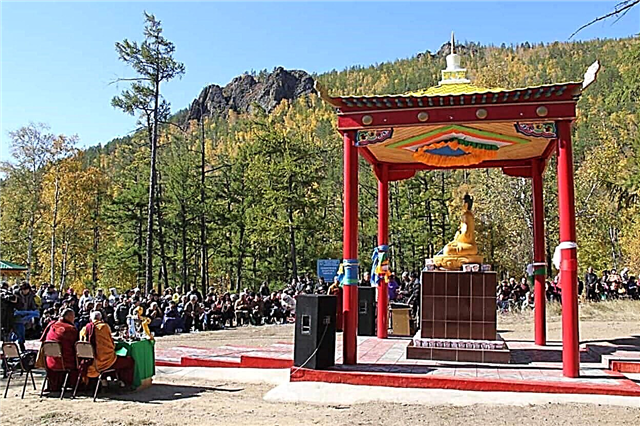The Trans-Baikal Territory is famous for its marvelous nature and mineral springs, in terms of the number of which, after the Caucasus, it ranks second. Snow-capped mountain peaks, centuries-old taiga, transparent lakes and mountain rivers delight and enchant a person who first came to this land. The sky here is almost always clean and clear - in terms of the number of sunny days, the administrative center of Chita is even equal to Sochi.
The Trans-Baikal Territory is a territory where different peoples have left their age-old traces in the form of architectural and archaeological monuments, interesting customs, beliefs and rituals. There are many monuments of the Buryat national culture here. You should definitely visit the Alkhanai National Park - the only place in Russia where natural attractions harmoniously coexist with the sacred objects of Buddhism.
The most interesting and beautiful places in the region
List, photos with names and descriptions of attractions worth visiting!
Daursky reserve
Located in the south of Transbaikalia, on the border with Mongolia and China. Founded in 1987 to protect the steppe ecosystems of Dauria. The main object is Torey Lakes, the largest in the region, a nesting and resting place for many birds, including very rare ones, for example, the relic gull. Only here 6 species of cranes live. Also, the reserve is the only habitat of the gazelle antelope in the country. Another attraction is the granite outliers of unusual shapes, Adun-Chelon.

Butinsky Palace
The main attraction of Nerchinsk. It was built in 1860-1870. It belonged to the well-known merchants-gold miners and patrons of the arts Butins. It was famous for its unique Venetian mirrors and a magnificent garden with tropical plants. In the courtyard of the estate, in addition to a chic medieval-style palace, there were water towers, warehouses, park areas, gazebos, and fountains. In the early 2000s, the building was restored and transferred to the local history museum.

Great Source (Mount Pallas)
A small mountain of the Yablonevy ridge, 1236 m high. A natural monument. Serves as the beginning of the three largest rivers - Amur, Lena, Yenisei. It is at this point, called the Great Source, that the basins of two oceans, three seas and three rivers meet. This discovery was made in the second half of the last century. The area attracts tourists with fresh air, endless expanses of water, larch taiga, high cliffs. In addition, the Great Source is a place of religious pilgrimage.

National Park "Kodar"
Created in 2018 in the north of Transbaikalia. Area - 492 hectares. Mountain taiga forests along the banks of two rivers - Chara and Vitim, ecosystems of the Kodar mountain range, habitats of endangered animals, for example, bighorn sheep, historical and cultural objects are subject to protection. On the territory of the park are the famous Charsky sands, volcanoes, glaciers, 570 lakes, mineral springs, the Marble Gorge and other natural objects. Tourist routes are being developed.

Chara sands
Sandy desert with an area of 10 by 5 km in the middle of the taiga. It is located at the foot of the Kodar ridge, in the Chara depression. The dunes reach a height of 80 m, the length of the largest - up to 200 m. On the border of the sands there are 2 lakes. It is believed that the desert arose on the site of an ancient glacial lake, of which only small water fragments remained scattered throughout the basin. It is located in an inaccessible place, although the nearest village of Chara is 9 km away.

Glaciers of Kodar
Natural monument. The only place of mountain icing in Transbaikalia. It is located 50 km from the village of Chara. The main feature is the great distance from the sea and ocean coast. The total area of the glacial massif is more than 6 thousand hectares. It was opened in 1958. About 40 glaciers have been discovered and studied, the largest have their own names. The surroundings are very picturesque and attract climbers not only from Russia, but also from other countries.

Alkhanay National Park
The main pearl of the park in the Aginsky Buryat District is the Alkhanai mountain range covered with forests. It is a natural monument and at the same time one of the main Buddhist shrines. The objects of worship for pilgrims are stone figures and structures created by nature itself. Among them are the Temple of the Great Good with healing water, the Temple of the Gate rock in the form of a 6-meter arch, the Diamond Princess outlier with a natural bowl, the cave "Mother's Womb" and others.

Assumption Church in Kalinino
The oldest surviving building of the pre-revolutionary period in Transbaikalia. It was consecrated in 1712. It was built as the main temple of the male Uspensky monastery, which was subsequently simplified, and the church was turned into a parish. Built in the Moscow Baroque style. In 1929 it was closed and ruined. Since 1970 it has been completely abandoned. There has been talk of restoration for a long time, but so far the building is being destroyed more and more.

Arey lake
Natural monument. Square - 4 km2, maximum depth - 13.5 m. It is famous for its healing air - it is surrounded by larch and coniferous forests. They are complemented by picturesque glades of "alpine meadows". The mud from the bottom of the lake has medicinal properties and is used by local health resorts to treat skin diseases. Areya water is saturated with oxygen, contains silver, iodine and other useful substances. There are many anthills on the coast. There are several sources.

Baikal-Amur Mainline
One of the largest railways in the world. Length - 4287 km. It starts in the city of Taishet, crosses 11 rivers, 7 mountain ranges, 60 settlements on its way and ends on the Pacific coast. Construction began before World War II and continued in 1974. The first trains on the way of the BAM passed in 1984. Along the entire route, 10 tunnels were built, the most difficult one is in the Severo-Muisky ridge. Its length is over 15 km.

Kazan Cathedral in Chita
The main Orthodox church in the city was consecrated and opened in 2004, on the occasion of the 110th anniversary of the founding of the Trans-Baikal Diocese. Built on the central square, on the site of the former cathedral, destroyed in 1936. Made in the style of traditional church architecture of the XIV-XVI centuries. The majestic look is given by 5 light drums with bulbous heads. It can accommodate more than 2 thousand believers. It has a 60-meter bell tower with 13 bells.

Aginsky datsan
Located in the village of Amithash. The date of foundation is 1811. Originally it consisted of one main and four small temples. Then another building was added, and by the end of the century the datsan became the largest Buddhist monastery in Transbaikalia. He was famous for his library, medical, astrological and philosophical schools, he himself printed textbooks, dictionaries, ritual texts. In the 30s of the last century it was closed and plundered. In the early 90s, it was re-consecrated.

Shumovsky Palace
The ancestral home of the Shumov brothers, gold miners. The date of construction is 1914. The facade of the three-story mansion is painted pink, has white decorative columns, and is lavishly decorated with stucco in the form of floral ornaments, spirals, and animal faces. The roof is crowned with domes with spiers. The interior decoration is no less luxurious - everywhere there are marble floors, paintings on the walls, moldings, wrought iron grates on the stairs. Today the palace houses the FSB headquarters.

Chita datsan
The very first Buddhist temple in Chita. It was built over 8 years, was consecrated and opened in 2010. To decorate it, a 2-meter gilded statue of Buddha, brass lions installed on the sides of the main deity, and a sacrificial censer were specially delivered from the Mongolian city of Ulan-Ude.Currently, services are held within the walls of the datsan - khurals, various rituals and ceremonies designed to help and protect against negative forces.

Heatei Caves
A natural monument consisting of two karst caves - Sukhoi and Mokra. The largest in Transbaikalia, the total length is 150-160 m. The wet cave is of ice type, has 4 grottoes, the area of the largest is 70 by 60 m. To descend into it, you need to overcome a 12-meter icefall. The second cave - Dry or Letnaya - consists of a large funnel with limestone boulders at the bottom. It is advisable to visit the caves as part of excursions and with special equipment.

Chita Zoo
The first animals in the Pioneer Park of Chita appeared back in 1986 through the efforts of the employees of the Palace of Pioneers. And the official date of the opening of the city zoo should be considered 1994. The number of its inhabitants is growing steadily. Today, 156 species of animals live here, about 700 individuals. Many acquire offspring, including the exotic Alexandrian parrots, which rarely breed in captivity. Guided tours are available for visitors to the zoo.

Transbaikal Botanical Garden
The botanical garden in Chita covers an area of 2.8 hectares. It also includes a nursery with an area of 24 hectares on the territory of the Peschanka village. Here they grow tropical, decorative, woody, medicinal plants, collections of roses, irises, lilies, etc. The assortment is constantly replenished due to expeditions and exchange of seeds with other botanical gardens. The staff of the institution conducts educational excursions. Of particular interest is a visit to the greenhouse winter gardens.

Museum of the Decembrists
More than 70 Decembrists were in hard labor in the present city of Petrovsk-Zabaikalsky, in the period from 1830 to 1839, the wives of 10 of them lived nearby. The museum was opened in 1980 in the preserved two-story mansion of Princess E. Trubetskoy. The expositions are located in 5 halls and acquaint visitors with the history of the Decembrist movement, as well as with the living conditions in which the exiled Decembrists lived. Among the exhibits are drawings, documents, books, household items.

Church of the Decembrists
The two-storey Mikhailo-Arkhangelsk Church is the oldest building in Chita, a monument of wooden church architecture. The date of foundation is 1776. In the 70s of the last century it was transferred to the local history museum, since 1985 a museum of the Decembrists has been opened on its territory. Many of them visited this temple while in exile, some got married here. The museum contains more than 800 original exhibits, including personal belongings, books, letters of the Decembrists and their wives.

Lake Arakhley
Among the largest lakes in Russia. It has a length of 11 km, a maximum depth of 20 m. The shores are very picturesque, covered with larch taiga with fragments of forest-steppe. There are sandy and sandy-pebble beaches. It is famous throughout the region for its notable year-round fishing. The ichthyofauna is represented by 15 fish species. There is an opinion that the Arakhlei fish is tastier and larger than the one in the neighboring lakes. On the coast are the villages of Preobrazhenka, Tasey, recreation centers, camps.

Lake Shakshinskoe
It is located 40 km from Chita, on the territory of the Arakhleysky reserve. The second largest after Arakhlei. It has an oval shape. The length is 11 km, the maximum depth is 6.5 m. It is famous for its rich underwater world. Coastal flora - larch taiga forests with forest-steppe and meadow zones. The water is fresh, in the middle of summer it warms up to + 22˚С. There are all conditions for year-round fishing and a cozy holiday on the picturesque coast.

Chita Cathedral Mosque
The only example of a Muslim cult preserved in Transbaikalia. It was built at the beginning of the last century with donations from members of the urban Muslim community, which was very rich and numerous at that time. It is a two-story red brick building with a high octahedral minaret tower. It can accommodate up to 800 people. In 1935-1995. was closed. Today the mosque is functioning, a Tatar school was opened with it.

Titovskaya Sopka
Located in the southwest of Chita. Named after ethnographer and archaeologist E. Titov. It is an extinct volcano of the Mesozoic era. Height above sea level - 1 km. Contains more than 30 archaeological sites - fragments of ancient settlements, petroglyphs, tools, animal remains were found. At the foot of the hill there is a monument to the organizers of the Chita Republic, who were shot in 1906. Also, a chapel was built here and a worship cross was installed.

Rocks Sukhotino
High granite rocks with steep cliffs. Monument of nature and archeology. They are located in the suburbs of Chita, on the banks of the Ingoda River, surrounded by delightful nature - pines, birches, willow bushes, wild rosemary thickets. Many different insects. Archaeological finds in the vicinity are 25 thousand years old. Among them are the remains of ancient people, animals, various products, petroglyphs. The area is popular with fishermen and rock climbers.

ODORA park
Located in the center of Chita. Leads its history from the end of the XIX century. Since 2010, it has been renovated and improved. There are children's zones, attractions, and a retro playground for the elderly. There are many sculptural compositions, among which - the learned cat, Zhdun, the figure of the actor A. Mikhailov in the image of Vasily from the film "Love and Doves". Military equipment is displayed on the Walk of Fame. Created "Treasure Island" - a recreation area with a pond, a bridge, gazebos, a bench of reconciliation.

Sokhondinsky reserve
It is located in southern Transbaikalia, in the vicinity of the Sokhondo mountain range. Organized in 1973. The area is more than 200 thousand hectares. Great landscape diversity - steppe zones, deciduous and coniferous forests, areas of mountain tundra. There are many mineral springs - arshan and mountain glacial lakes. The fauna includes 67 species of mammals, including 15 species of predators, 250 species of birds, 1200 species of arthropods. The world watershed passes through the protected area.

Chikoy National Park
Created in 2014 to preserve virgin natural complexes in the upper reaches of the Chikoy River. The area is more than 600 thousand hectares. Many animals and birds from the Red Data Book live here. There are several natural monuments, the most interesting is Lamsky town. This is a collection of freestanding rocks of the most incredible shape, created by the master-nature. Some of them are 50 m high. Several tourist routes run through the park.

Mineral spring Molokovka

Marble gorge
A rocky, treeless valley in the Kodar Mountains, surrounded by 200-meter cliffs. Its name is associated with the abundance of different types of marble. It attracts tourists with its dark history. In the middle of the 20th century, there was a uranium mine and a forced labor camp for political prisoners serving as the main labor force. Uranium reserves turned out to be small, the camp existed for 2 years. Its buildings, barbed wire, household utensils have survived to this day.

Konduisk settlement
It is located in the middle of the steppe, 7 km from the village of Kondui. Fragments of a 14th century settlement are related to the early history of the Mongolian state on the territory of Transbaikalia. Here, on an artificial embankment, the palace of the Mongol feudal lord, who belonged to the imperial family, was built. Nearby there was a garden with gazebos, pavilions, a swimming pool. And although today the territory of the settlement is neglected, only the ruins of the castle and gravestones in the ground remain - there are always a lot of tourists here.


